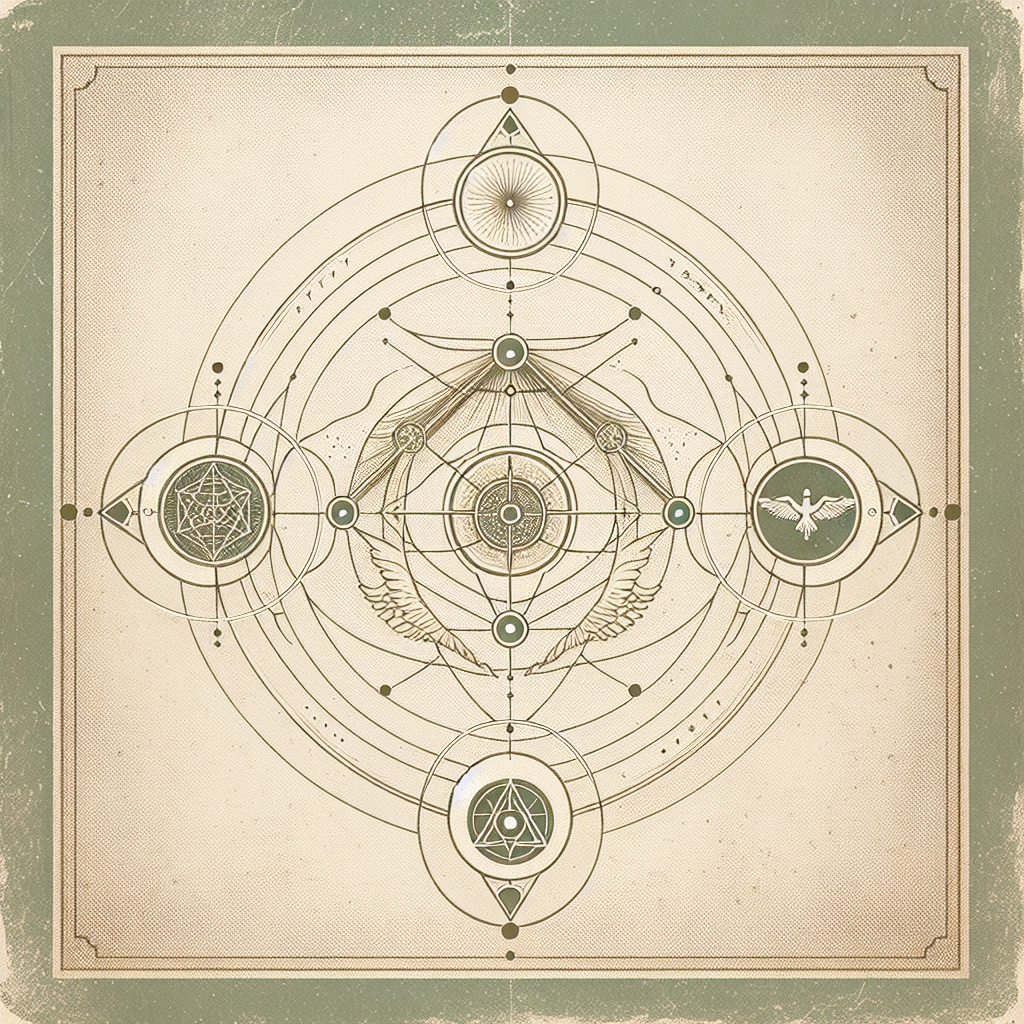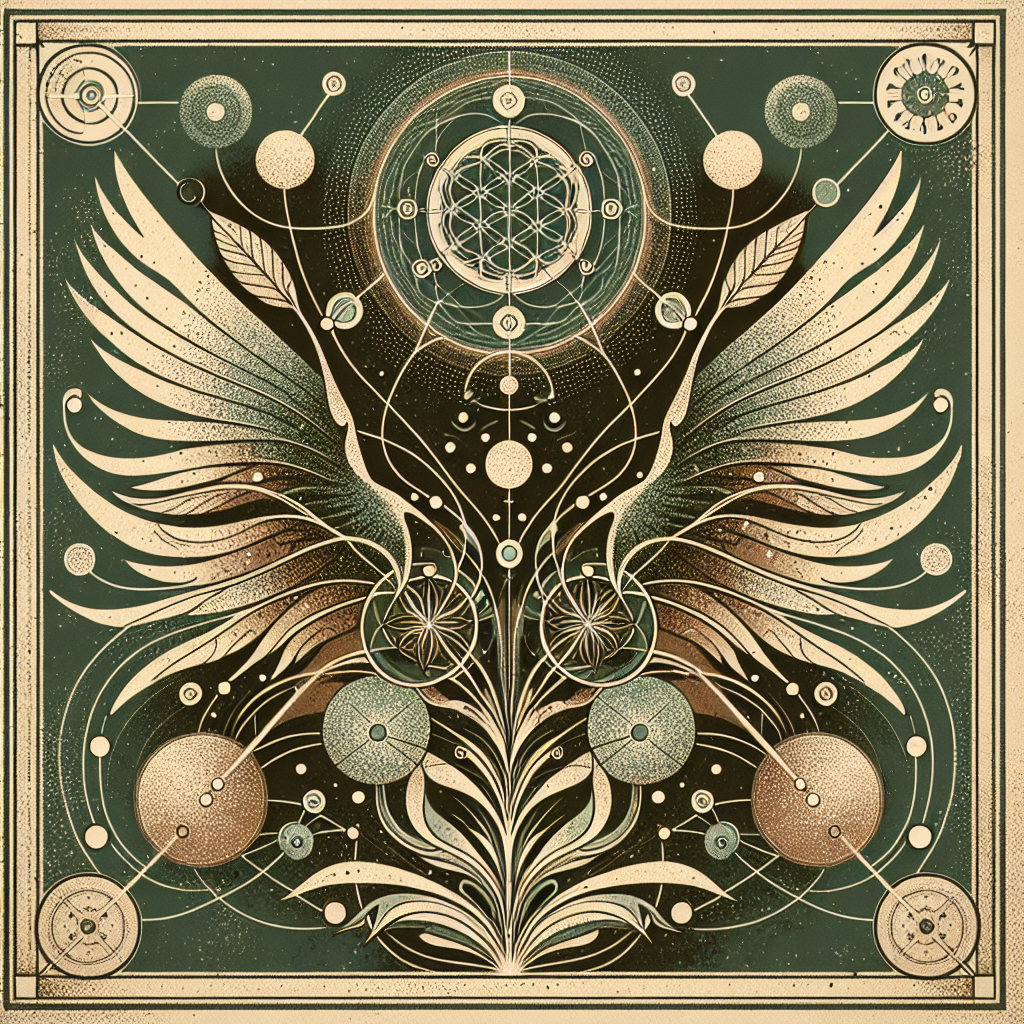
Ayahuasca
Introduction
Ayahuasca (also spelled hoasca; related regional names include yagé and caapi) is a psychoactive tea from western Amazonia. It is typically brewed from the liana Banisteriopsis caapi and the leaves of Psychotria viridis (or, in some regions, Diplopterys cabrerana).
Its principal active compounds are:
- N,N-dimethyltryptamine (DMT) from the leaves
- β‑carboline alkaloids—harmine, harmaline, and tetrahydroharmine—from the vine
The β‑carbolines inhibit monoamine oxidase A (MAO‑A), which allows orally ingested DMT to be psychoactive. In ceremonial contexts, drinkers commonly report vivid visions, emotional catharsis, purging (vomiting), and heightened autobiographical recall; acute nausea is common. The word ayahuasca, from Quechua, is often glossed as “vine of the soul/spirits,” highlighting its status as a plant teacher in many local cosmologies. [1]
Together, these elements create a brew known both for its demanding physical effects and for experiences that many describe as powerfully introspective.
Cultural Roots & History
Indigenous peoples and mestizo urban–rural populations in the Upper Amazon (Peru, Brazil, Colombia, Ecuador) developed diverse lineages of practice around ayahuasca. Among Peruvian mestizo healers known as vegetalistas, ayahuasca is one of several “plant teachers” used to gain knowledge and healing power. Apprenticeship traditionally involves dieta—extended periods of dietary and social restriction coupled with ingestion of selected plants—to cultivate relationships with plant spirits and to acquire healing songs (icaros) that guide ritual work. Illness may be interpreted as resulting from sorcery (virotes, “magical darts”), spirit intrusion, or social conflict; healing can combine plant remedies, icaros, tobacco smoke (soplar), and ritual extraction of harmful forces. [2]
During the twentieth century, ayahuasca practices also developed into Brazilian church movements that combine Amazonian plant sacramentality with Christian and Spiritist elements. The União do Vegetal (UDV) and Santo Daime treat the tea—called hoasca or daime—as a sacrament within structured liturgies emphasizing moral discipline, communal order, and spiritual cleansing. UDV’s use of hoasca is central to its religious identity and was recognized as such in U.S. federal litigation. [4]
These histories reflect a living tradition: one that holds plants as teachers and communities as co‑learners.
Core Beliefs & Worldview
Across regions, several themes recur:
- Relational animism. Plants (and other beings) are persons with agency. Knowledge, songs, and healing are understood as gifts learned from plant spirits during visions or dreams; the practitioner’s ethical conduct and adherence to dieta shape the quality of these relationships.
- Moral‑therapeutic framing. Illness has social and spiritual dimensions; effective treatment aims to restore reciprocity among humans, nonhumans, and environments.
- Centrality of sound. Icaros function as technical means to “navigate” visions, attract protective allies, and expel malevolent forces. [2]
Brazilian ayahuasca churches articulate a related but distinct worldview. The U.S. Supreme Court described UDV as a “Christian Spiritist sect” that integrates hoasca communion with teachings on personal reform, community service, and spiritual discernment. Here, the tea is not primarily a shaman’s diagnostic tool but a sacrament administered within a defined hierarchy and code of conduct. [4]
Across these perspectives runs a shared thread: relationship and responsibility—toward self, community, and the more‑than‑human world.
Practices & Community Life
Indigenous and Mestizo Settings
Ceremonies are typically led by an experienced healer who prepares the brew—often from locally gathered vines and leaves—and supervises the night’s work. After ingestion, the leader sings icaros, uses a rattle or leaf bundle for rhythmic guidance, and may perform individual healings. Participants commonly purge; many regard this as both a physiological and spiritual cleansing.
Safety‑oriented norms reflect long‑standing praxis and the pharmacology of MAO‑A inhibition and serotonergic effects. These often include:
- Sexual abstinence
- Food restrictions
- Avoidance of certain pharmaceuticals [1][2]
Brazilian Church Settings
In UDV and related churches, ceremonies (“works”) are orderly, often uniformed gatherings with prayer, hymns, scripture readings, and regulated serving of the tea. The emphasis is on clarity, discipline, and moral instruction rather than on a shamanic contest with sorcery. Both church and shamanic settings stress community formation, mutual aid, and post‑ceremony integration, though forms and theologies differ. [4][2]
In both contexts, the brew is framed as a means to learn, to recalibrate one’s life, and to mend relations—with oneself and with others.

How It Exists Today
Global Spread and Research
From the late twentieth century onward, ayahuasca practices spread far beyond Amazonia through religious missions, diaspora networks, and tourism. Academic and media attention amplified this diffusion. A growing scientific literature maps pharmacology, neurobiology, and psychological effects. Mechanistic accounts emphasize 5‑HT2A receptor agonism by DMT plus MAO‑A inhibition from β‑carbolines, with observed changes in brain networks implicated in self‑referential processing, affect, and autobiographical memory. [1]
Clinical Evidence
Clinical evidence remains preliminary. A small double‑blind, randomized, placebo‑controlled trial in Brazil (n=29) found that a single dose of ayahuasca produced greater reductions in depression severity than placebo at one day, two days, and seven days post‑dosing; effect sizes increased over the week. Limitations include the small sample size, short follow‑up, and blinding challenges due to noticeable psychoactive effects. Findings suggest possible rapid antidepressant action, but replication in larger, multi‑site trials with longer follow‑up is needed before drawing firm clinical conclusions. [3]
Legal Status
Legal status is heterogeneous. In the United States, the Supreme Court in Gonzales v. O Centro Espírita Beneficente União do Vegetal (546 U.S. 418, 2006) held—at the preliminary‑injunction stage—that applying the federal ban on DMT to block UDV’s sacramental hoasca use violated the Religious Freedom Restoration Act absent proof of a compelling interest pursued by the least restrictive means. The decision led to a narrow, regulated religious exemption for that church; it did not legalize general or commercial use. Other jurisdictions regulate the brew, its plants, and DMT differently, resulting in a patchwork of permissions and prohibitions. [4][1]
Ongoing Questions
Across settings, communities continue to negotiate questions of safety, ritual authority, and cultural stewardship. While Amazonian knowledge frames the brew as a teacher and healer, scholarly consensus emphasizes that meanings and institutional forms vary widely across peoples and movements; no single doctrinal center defines ayahuasca today. [2][1]
This living field continues to evolve—guided by inquiry, respect, and the shared work of integration.
Sources
[1] Domínguez-Clavé, E., et al. “Ayahuasca: Pharmacology, neuroscience and therapeutic potential.” 2016. Review summarizing plants, alkaloids, mechanisms, acute effects, and global spread; anchors pharmacological claims. https://pubmed.ncbi.nlm.nih.gov/26976063/
[2] Luna, L. E. Vegetalismo: Shamanism among the Mestizo Population of the Peruvian Amazon. 1986. Ethnographic monograph on mestizo Amazonian healing, dietas, icaros, and plant-teacher cosmology. https://wellcomecollection.org/works/k8hbc55w
[3] Palhano-Fontes, F., et al. “Rapid antidepressant effects of the psychedelic ayahuasca in treatment-resistant depression: a randomized placebo-controlled trial.” 2019. Small RCT; key efficacy and limitation details. https://pmc.ncbi.nlm.nih.gov/articles/PMC6378413/
[4] Gonzales v. O Centro Espírita Beneficente União do Vegetal, 546 U.S. 418. 2006. U.S. Supreme Court case establishing a narrow RFRA-based religious exemption for hoasca use. https://supreme.justia.com/cases/federal/us/546/418/